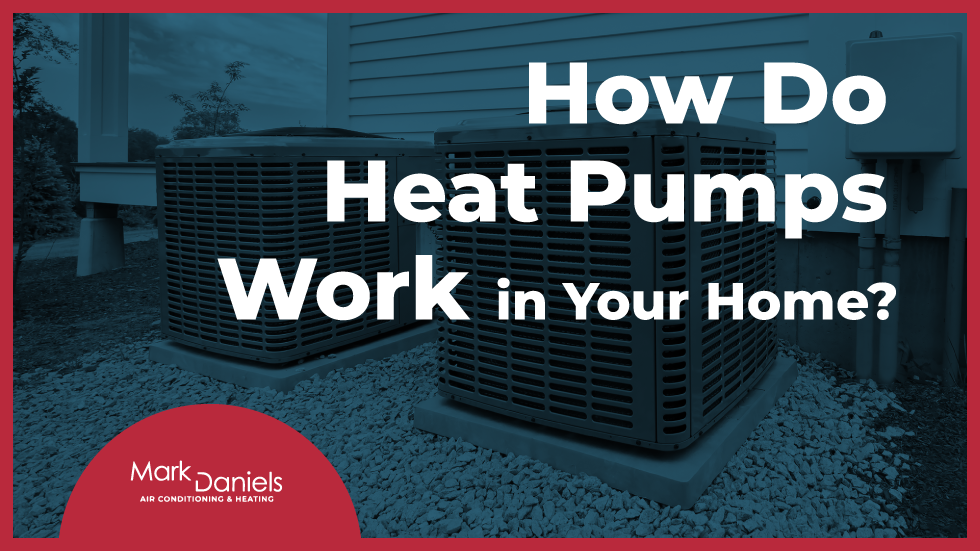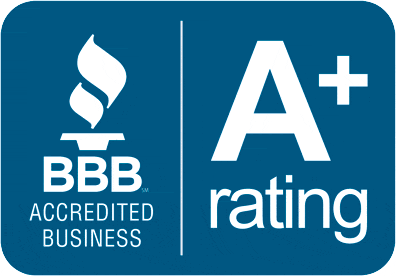Licensed | Bonded | Insured

How Do the Heat Pumps Work in Your Home?
If you live in Mesa, AZ, you know how important it is to maintain a climate-controlled home.
We work our ACs to survive the sweltering summers and bump up the heat occasionally on the coldest days of our mild winters.
You may be satisfied with the comfort of your home, but if you’re on a furnace and air conditioner system, you could be wasting money without realizing it.
Compared to gas furnaces, heat pumps are much more efficient heating systems, and since they’re fully electric, they’re better for the environment.
Furnaces supply superior heating power, but during Arizona winters that barely touch freezing temperatures, that power is rarely necessary.
And with rising fuel prices, it’s understandable that many homeowners are looking at heat pumps as cost-effective alternatives.
If you’re interested in saving money and the environment by investing in new heat pumps, we’ll explain how these systems work to keep your home at the perfect temperature.
How Does a Heat Pump Work?
A heat pump doesn’t produce heat but instead moves it from one place to another.
Heat is pulled from outside, with some heat pumps designed to pull heat from the air and others designed to extract it from the ground.
The heat pump draws in heat and transfers it to the air running through your ductwork.
An internal blower moves air around, sucking in cold air from the house and blowing out warm air to bring the house to a comfortable temperature.
A heat pump has a construction similar to a central air conditioning system.
As a result, you can also use it to cool your home, giving you an all-in-one system to maintain your indoor climate year-round.
Heat Pump Construction
A heat pump consists of two pieces — an outdoor unit and an indoor unit.
You can get ducted heat pumps for a whole house, much like central AC.
You can also get them in a split system, where the indoor unit attaches to a wall and blows air directly into the room, removing the need for ductwork.
There are four key components of a heat pump:
- Condenser coils (outdoor)
- Compressor (outdoor)
- Evaporator coils (indoor)
- Expansion valve (indoor)
All of these pieces are connected by copper lines that contain refrigerant, a heat-absorbing compound that allows the blower to warm or cool the air.
All four heat pump components are part of a circuit around which the refrigerant flows.
The setup is nearly identical to an air conditioning unit, with one notable exception — the reversing valve.
Simple enough, this valve reverses the flow of refrigerant, changing the heat pump from heating mode to cooling mode.
How does a reversal valve change warm air to cold air?
Let’s explore the basics of how a heat pump works to understand how it can produce both.
Heat Pumps in Cooling Mode
The cooling process starts with the refrigerant in a liquid state in the evaporator coils.
These coils are part of the indoor unit where warm air turns into cool air.
Cooling Air at the Evaporator Coils
As warm air from the house is sucked into the ductwork and blown over the evaporator coils, the refrigerant sucks in the heat energy from the air, turning it into a warm gaseous state.
The cooled air is then pumped back into the house.
Since the evaporator coils need to be filled with liquid refrigerant to continuously handle the incoming air from the house, the gaseous refrigerant needs to expel the heat somewhere.
It does this by flowing to the condenser unit that is housed outside.
Releasing Heat Outside
The warm refrigerant gas first enters the compressor.
The compressor is responsible for pressurizing the refrigerant, which raises the heat even higher and pumping the refrigerant through the entire circuit.
The high-pressure, extra-hot refrigerant enters the condenser coils, where the heat energy is transferred to the outside air.
Condenser coils have fins attached to increase the surface area where heat is released, making them cool quicker.
The large outdoor fan helps the refrigerant cool even more by blowing air over the condenser coils.
Returning to the Evaporator
The refrigerant is much cooler at this point.
It converts back to a liquid and continues to flow back to the evaporator.
But it is still at high-pressure thanks to the compressor.
To get it back to lower pressure and ready to absorb more heat, the refrigerant goes through an expansion valve.
The valve depressurizes the refrigerant before sending it back to the evaporator coils.
The low-pressure, cool liquid refrigerant is now in the perfect state to absorb as much heat as possible from the incoming household air.
Heating a Home
All you need to do to switch heat pumps from cooling to heating is turn the reversing valve.
The reversing valve reverses the flow of the refrigerant.
Let’s look at how this translates to heating a home.
Starting at the outdoor condenser coils, cold liquid refrigerant absorbs heat energy from the air or the ground.
The warmer refrigerant moves to the compressor, which pressurizes the refrigerant turning it into a hot gas.
The hot gas enters the evaporator coils, where cool household air blows over them.
Heat energy is transferred to the air, and the warm air is blown back into the house.
The refrigerant is now cooled and needs to heat back up.
But it’s still high-pressure, thanks again to the compressor.
It moves to the expansion valve, which depressurizes it, sending cool, low-pressure liquid refrigerant back to the outdoor unit to absorb more heat.
Consider a Heat Pump for Your Arizona Home
A heat pump can be a perfect solution for managing our Arizona climate.
It’s an energy-efficient system that can help you cut back your utility bills.
And since it’s one system, maintaining and repairing heat pumps is a simpler chore.
If you’re ready to get the most out of your heating system, our experts at Mark Daniels Air Conditioning & Heating can make it happen.
Whether that means installing new heat pumps or tuning up existing furnaces, our knowledgeable team offers the highest-quality service and value for any HVAC need.
Contact us today to learn more about our comprehensive air conditioning and heating services.
Looking for a trusted Gilbert AZ heating company? Contact your 5-star, emergency HVAC experts at Mark Daniels Air Conditioning & Heating. We’ve been serving the Valley Since 1996. Call (480) 571-7219 or request service online today!
Read More about Air Conditioning & Heating Tips:



